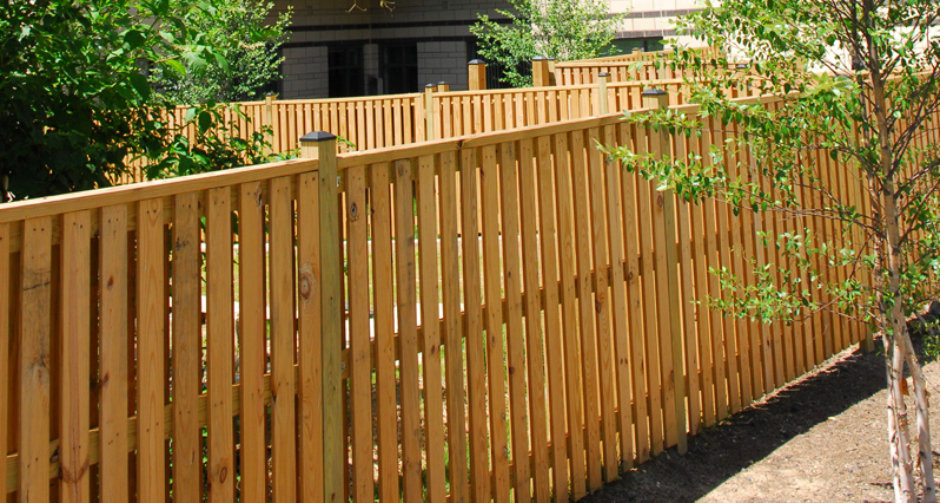When you want to build a fence, whether it is on a residential or commercial property, the first step is to apply for a fencing permit. Many state and local governments have their own rules and regulations for what types of construction are allowed, and this includes fences. From state to state and city to city, these regulations will likely change, so it is important to do your research about this and be prepared.
Some localities may not want you to build a fence of a certain height, with certain materials, or in certain locations, so they require you to submit an application for a permit before the installation takes place. Zoning laws are official rules mandated by the city, county, or state, so it is necessary that all property owners have a good understanding of these rules. The fencing permit process may seem complicated, but this post will tell you about everything you need to know about fencing permits. If you have any other questions along the way, then you can always feel free to speak with a Long Fence team member.
How to Apply
Just like how rules and regulations may be different from place to place, the application process for a fencing permit may also change depending on your city, county, or state. Oftentimes, applications for fencing permits are available online. While some applications are simple online forms, however, others may require more materials and documents. This may even include a CAD drawing, in which case you should ensure that the fencing contractor who completes this drawing manages the rest of your fencing application process as well.
This process may seem difficult, so when in doubt, you can always begin the fencing permit application process by working with your fencing contractor. Long Fence regularly helps clients get through this process, and we have a great deal of experience with the local rules and regulations in particular. We have a good idea of what will and will not get approved, so we always do our best to ensure that your project will go off without a hitch.
Regulations to Consider
When planning to build a fence, there are a number of local regulations you may need to consider as you design and install it. These regulations will depend on the laws of your state, city, neighborhood, and community, so you should be sure to do your research about all of the following possible regulations throughout the process. Not every regulation will be relevant to your fencing project, so you should understand your unique situation before getting started.
Height
Many cities and communities have maximum heights that are allowed for fences in the area. There is typically a maximum height for fences in front of the house, which is shorter, and a maximum height for fences behind or on the sides of the house, which is taller. Any proposed fence that would be taller than the listed maximum height would require special approval from a fencing permit in order to be legally installed.
Location
The location of a fence, even when built on your personal property, can also be limited by local regulations. Some cities do not allow fences to be built on the front side of the house, as it blocks the view of the property. Others may have specific guidelines for how close fences can be to sidewalks or roads. Backyard fences are rarely an issue, but you should still evaluate the location regulations for fences when building or installing one of your own.
Materials
In order for fences to be cohesive with the rest of the neighborhood or community, certain fencing materials may be discouraged or banned by local government or even homeowner’s associations. For example, you may be asked to create a natural fence with shrubs and bushes to limit your materials to wood and metal. Additionally, many areas do not allow electric fences because it is a safety concern.
Neighbors
When you live in a tight neighborhood, the fences you build may have a large impact on your neighbors’ quality of life as well. Because of this, in some situations, it is mandatory that you get their written approval to build the specific fence. Some people even choose to share the cost of the fence with their neighbors, so this is definitely a conversation that should take place before the installation.
Condition
The fence’s condition may not be a concern at the time of installation, but as it becomes older and more worn, this is something you should consider more. Fences that become run-down and an eyesore, as well s fences that become a safety concern, may violate your community’s fencing rules. You should be sure to know what the unique regulations are in your area, and even once the fence is built, continue ensuring that your fence meets these guidelines and expectations.
While these rules could limit the options for possible fencing structures on your property, other fences may be required by local regulations. Certain commercial properties, parks, parking lots, or other areas are sometimes required to have a certain type of fence or another protective barrier, depending on the relevant regulations. Fencing requirements may often be overlooked, but these are important rules that all business owners and homeowners alike should be aware of.
Next Steps
Once you have completed your application for a fencing permit and are finally approved, Long Fence is here to help you with the next steps. Together, we will complete the design process, retrieve the materials, and install the final product so that you will have your perfect fence. Long Fence provides both residential and commercial fencing options, so no matter what you need, we are here to help. We can even assist you with financing if that is a concern.
Give us a call today for a free consultation and price estimate. Long Fence looks forward to adding you to our family and helping you through the fencing permit and installation process.
Read More:

